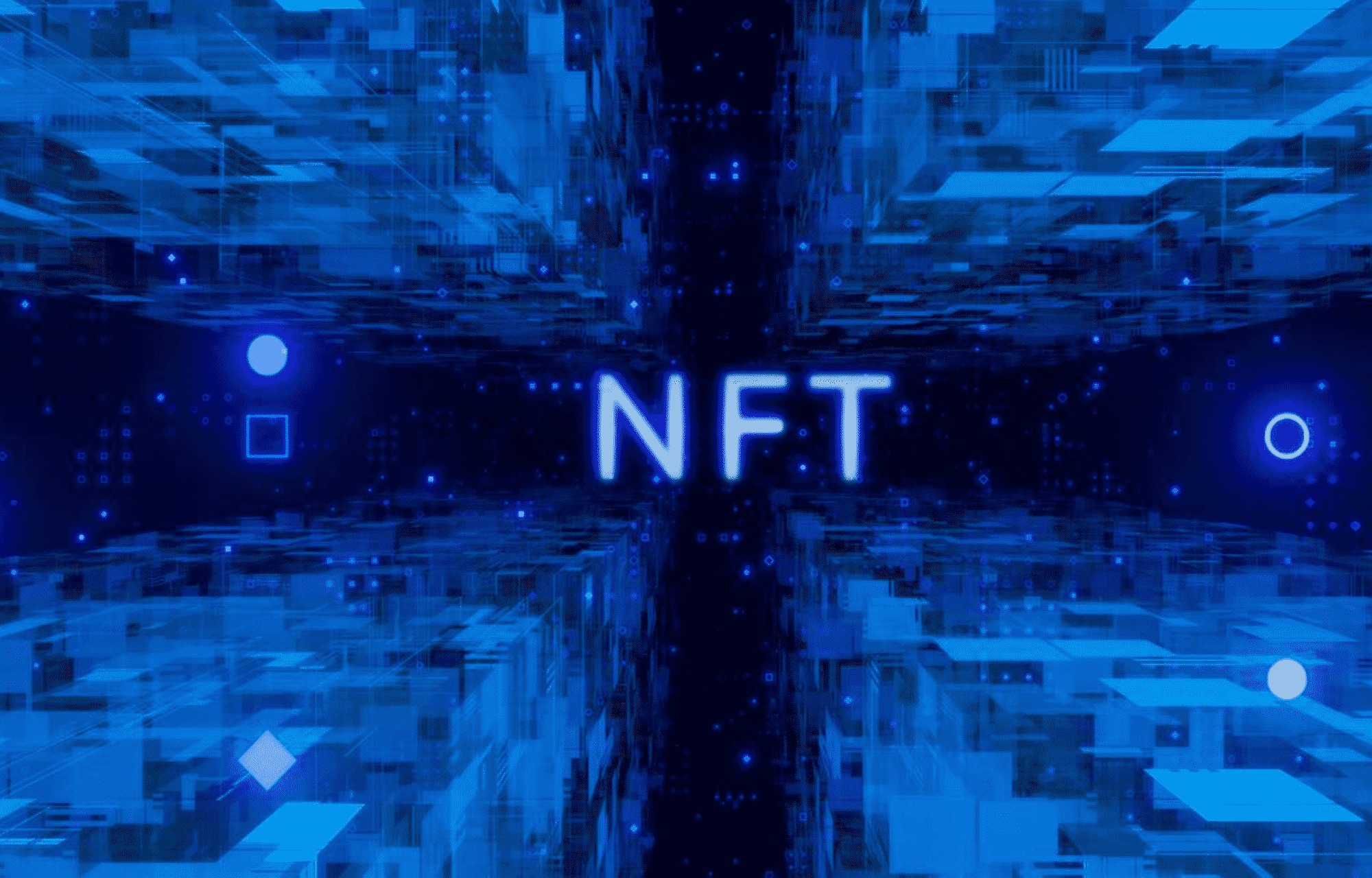There’s no bar as to what counts as an NFT (see our post on what is an NFT), it’s safe to say anything can be an NFT — and that isn’t far from the truth.
NFT’s diverse use cases and unique tracts can be attributed to its growing scope for innovation and developing infrastructure.

This leaves discussions about the different types of NFTs open to additions and the possibility of new NFTs emerging in the future.
Presently, below are the notable and sensible NFT variants in the marketplace.
You may also be interested in our NFT FAQ and NFT storage guides.
Different Types of NFTs
Below you can find an overview of our guide to the different types of NFTs.
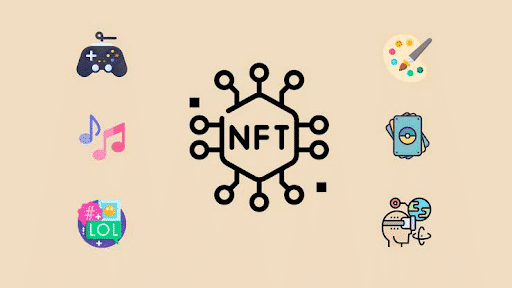
- Different Types of NFTs
- Blockchain Technologies Explained
- Play-To-Earn NFT Games
- The Relationship between Metaverse and NFT
1. Collectible items/Trading cards
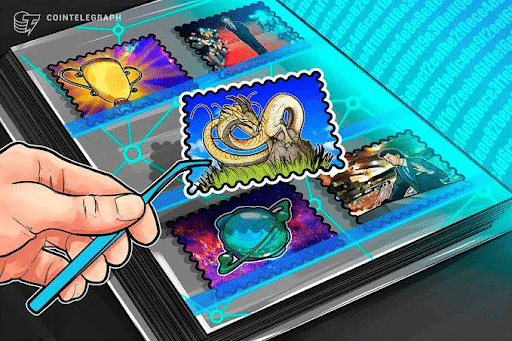
Collectibles being sold for thousands of dollars isn’t new, and this applies to NFTs as well, which can function as digital trading cards for collectibles.
The first instance of NFTs being seen as collectibles was with the emergence of Cryptokitties — unique digital kittens that became popular among collectors in 2017. It’s also credited with being the first use case of NFT.
The NFT market is flooded with different types of trading cards and collectibles listed by companies — as long as it’s deemed collectible.
2. Artwork

NFT artworks are a fusion of technology and creativity.
The majority of NFTs in circulation today are artworks — programmable arts account for 99% of all NFTs. This is because artists were quick to capitalize on the conception of NFTs.
Currently, virtual artworks including digital images, GIFs, and short videos are being sold online as though they are physical items.
These are the most expensive NFTs and sometimes sell for millions. You can explore the best NFT marketplaces here.
See our guide on how to buy and sell an NFT and our NFT marketing guide.
3. Event Tickets
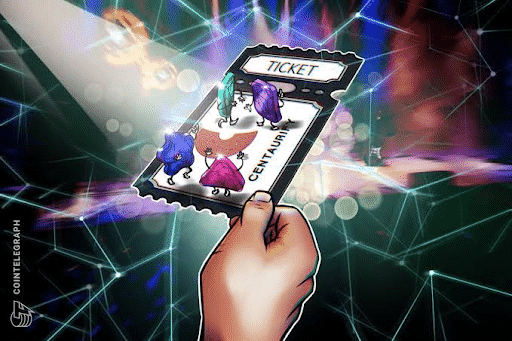
NFTs can serve as event tickets, simplifying ticket verification and identity checks. Organizers of popular events such as concerts and music festivals can utilize a selected blockchain to mint a limited number of NFT tickets.
These tickets can be purchased at auction listings and then stored in mobile devices through wallets for easy accessibility.
4. Music and media

Converting music to NFTs has given rise to a new kind of NFT variant. Media files and music can now be linked to NFTs with the true ownership claim given to an individual.
This transition of music from fungible good to being tokenized has benefited artists in several ways. They can now directly engage with fresh audiences and loyal followers to provide a premium experience to listeners.
NFTs also allow musicians to keep roughly 100% of their earnings without having to worry about the record label and streaming platform cuts — which is why it’s well-received by artists.
5. Gaming
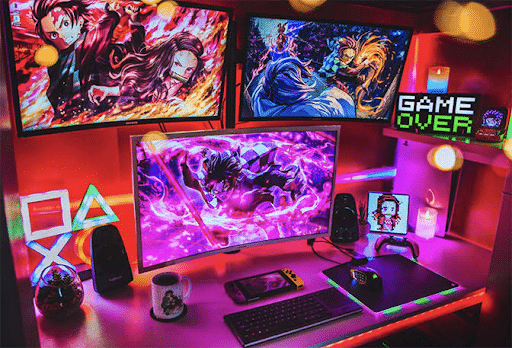
Game creators have shown significant enthusiasm for NFTs and have extensively integrated them into their projects. NFTs are used as in-game items in online gaming platforms. Non-fungible tokens help drive the growth of in-game economies through immutable ownership records for in-game items.
NFTs are primarily applied to in-game content like characters, skins, and more, rather than the entire game itself. Additionally, NFTs are used for the sale of limited edition DLC assets, serving the player who wants to enjoy the exclusive uniqueness of NFT assets. This, however, doesn’t stop the company from selling its regular DLC.
6. Big Sports Moments
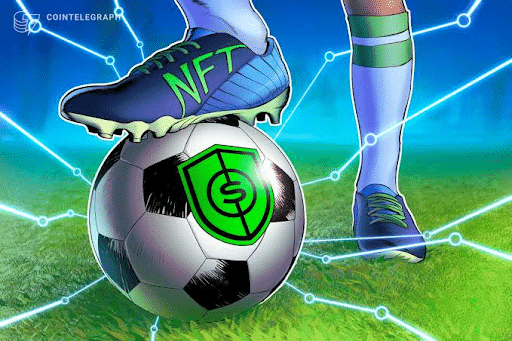
Another way NFTs have been used is to capture memorable sports moments in the form of short video clips. This doesn’t have a physical equivalent like other NFT types we talked about so far but the historical significance is priceless — makes sense while they are expensive. Some of these NFTs can feature sports moments from game-changing touchdowns to groundbreaking slam dunks.
7. Virtual Fashion
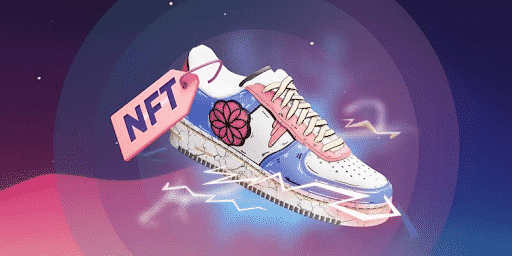
Why should fashion be any different from anything else bought and sold on the NFT market? It’s all about personal preference when it comes to splurging money on a gorgeous Bikini you won’t be able to wear. You can use NFTs to style up your online avatars instead of buying NFTs artworks.
This NFT type is unquestionably reserved for the more fashion-conscious and opulent individuals. And of course, each item would be limited and one-of-a-kind.
8. Real-world assets
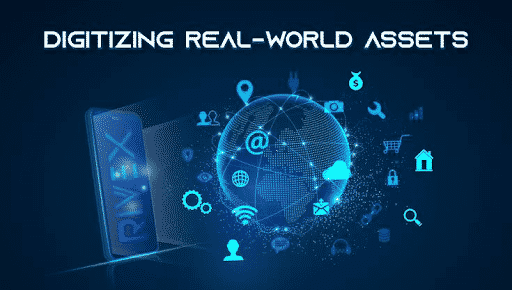
There are many speculations as to NFTs being used as real-world tokens in the future. The advancement in the NFT domain is heading towards achieving that and the odds of it becoming a reality are promising.
The cryptographic proof of ownership that NFTs provide makes it possible for it to reflect real-world assets. Many NFT projects are currently focusing on the tokenization of luxury items and real estate. You get more options when buying a house or a car using NFT deeds.
9. Memes

The sale of memes as NFTs has been the most significant achievement in the field of NFTs in recent years. Memes have been linked to NFTs, despite their popularity among internet users and being part of popular culture. The preparedness of meme creators to develop an expanding futuristic ecosystem is demonstrated by the sale of memes as NFTs.
10. Domain names
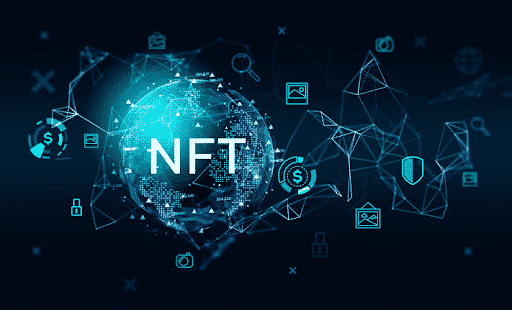
The NFT market has made it possible for users to register and sell domain names. You can create a detour around having to pay a third-party company for the management of your domain name by acquiring one on the NFT market.
There are exclusive rights on the name ownership meaning you don’t need the middleman.
Examples of domain name NFT providers are Ethereum Name Service (ENS) and Unstoppable Domains through decentralized domain name services.
Blockchain Technologies Explained

Watch this video to see blockchain explained in simple terms.:
In short, there are four types of blockchain structures:
1. Public Blockchains
Anyone with internet connectivity can join a blockchain platform and become an authorized node, making public blockchain non-restrictive and permissionless. This user has access to current and historical records, as well as the ability to perform mining operations, which are sophisticated calculations required to verify transactions and add them to the ledger. On the network, no valid record or transaction may be modified, and because the source code is usually open-source, anybody can verify the transactions, uncover errors, and offer fixes.
This sort of blockchain is appropriate for organizations that value transparency and trust, such as non-governmental organizations and social assistance groups. Because of the network’s public nature, private enterprises will most likely avoid it.
2. Private (or managed) blockchain
A private blockchain is a blockchain network that operates in a restricted context, such as a closed network or is controlled by a single entity. While it functions similarly to a public blockchain network in terms of peer-to-peer connectivity and decentralization, this blockchain is substantially smaller. Private blockchains, rather than allowing everyone to join and supply computer power, are often run on a small network within a company or organization. Permissioned blockchains and business blockchains are other names for them.
3. Consortium Blockchains
A federated blockchain or consortium blockchain is similar to a hybrid blockchain in that it combines private and public blockchain capabilities. However, it differs in that it involves various organizational members working together on a decentralized network. In essence, a consortium blockchain is a private blockchain with restricted access to a specific group, removing the hazards associated with a private blockchain controlled by a single business.
Consensus methods are regulated by preset nodes in a consortium blockchain. It has a validator node, which is responsible for initiating, receiving, and validating transactions. Transactions can be received or initiated by member nodes.
4. Hybrid blockchains
Organizations who desire the best of both worlds will sometimes employ hybrid blockchain, a type of blockchain that includes characteristics of both private and public blockchain. It allows businesses to create a private, permission-based system alongside a public, permissionless system, letting them regulate who has access to certain data stored on the blockchain and what data is made public.
In a hybrid blockchain, transactions and records are typically not made public, but they can be validated when necessary, for as by granting access through a smart contract. Inside the network, confidential information is kept secure yet remains verifiable. Even if a private entity owns the hybrid blockchain, it is unable to modify transactions.
Play-To-Earn NFT Games
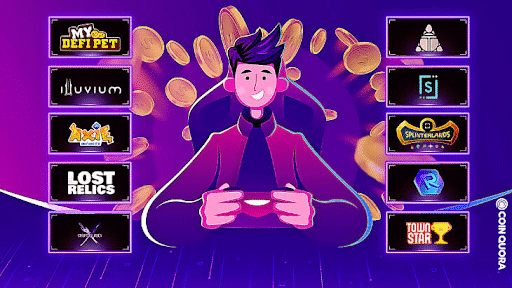
An emerging way of earning money in the Game-fi world is by playing NFT games. Players can earn tokens with play-to-earn models or accumulate in-game NFTs which they can sell to other players and collectors.
The token approach is usually more reliable because tokens can be gained consistently through gameplay, whereas NFT drops are more random. Users in low-income nations have flocked to play-to-earn as an alternative or supplement to fixed income or social security.
How do NFT games work?
NFT games aren’t the same as simply keeping crypto collectibles in your wallet. NFTs will be used in the rules, procedures, and player interactions of an NFT game. As an example, a game could use an NFT to represent your unique character or avatar. NFTs can also be found in digital things found while playing the game. You can then swap or trade your NFTs for a profit with other gamers.
So, how do you technically include NFTs in a game environment? Developers build smart contracts that make up the rules for the NFTs used in a game to exchange, produce, and implement them. On a blockchain, smart contracts are self-executing pieces of code.
What are in-game NFTs?
In-game NFTs are an additional way for you to earn money while playing NFT games. You acquire NFTs, which are collectible objects, rather than fungible ERC-20 tokens like SLP in Axie Infinity or SKILLS in CryptoBlades. This gameplay method is how NFT games have traditionally generated revenue. The value of items will vary depending on their cosmetics, rarity, or utility in the game.
How do NFT games make money?
The amount of money you can earn playing an NFT game will depend on the specific game’s mechanics and market demand. The money you make will come from other users who value the NFTs or cryptocurrencies earned in the game. You will need to cash out by selling your goods on a market, exchange, or auction house. With NFT games, value is derived either from the NFT or the token’s collectability or in-game utility. These two factors also lead to speculation.
Can I lose money playing NFT games?
Playing NFT games might lead to financial loss. The exact quantity is determined by the type of game you’re playing, the mechanics of the game, and the worth of the NFTs you’re dealing with. Losing money does not always imply that you are being conned. Because NFTs are speculative and their value is determined by market forces, your losses are likewise determined by market forces. Only invest what you can afford to lose, just like any other cryptocurrency investment.
Every Type of NFT Utility Explained | DAO, Staking, Burning, Breeding, Utility Tokens, and More!
Watch this video to understand how NFT Utilities work, including DAOs, staking, burning, breeding, utility tokens, and more.
The Relationship between Metaverse and NFT
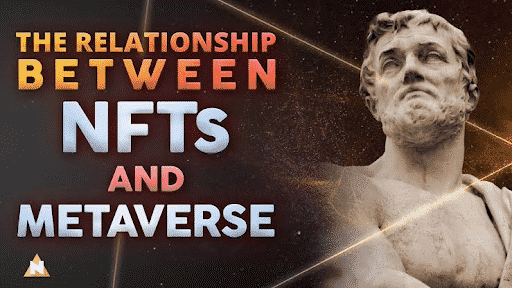
The NFT metaverse connection is unquestionably a promising application for NFTs. The future of NFTs opens up a slew of new options for investors, businesses, and amateurs, all of which have the potential to alter NFT usage and adoption in the long run.
The most obvious link between the metaverse and NFTs is that of digital assets and how they are valued. People will be able to display digital forms of art and property in the metaverse, and NFTs will allow them to price that content with proof of ownership.
New NFT Community for Artists, Designers & Creators
The Forest is the first NFT community for designers & creatives. The Forest is more than a community, however. It is an educational platform and NFT marketplace that empowers creatives with the knowledge, connections & tools to thrive as NFT & Web3 professionals.
Reason to join: This NFT community is for artists, illustrators, and designers looking to become thriving Web3 & NFT creators and is tailored towards beginners.
Follow The Forest and JustCreativeEth on Twitter.
Will NFTs Build the Metaverse?
Non-fungible tokens (NFTs) and the technology that underpins them are critical to the Metaverse’s development. NFTs exist on the blockchain, which was first used to exchange digital assets but now has a wide range of applications. When we show the role of NFTs in Metaverse’s digital environment, we can see how they connect with existing VR and AR technology to manage the entire space.
It means that NFTs can represent ownership of everything in the Metaverse, including in-game assets, virtual avatars, and real estate properties (digital version). Similarly, the Metaverse-based NFT marketplace allows users’ avatars to browse the marketplace, examine the digital products in greater detail, and select the product of their choice.
The Metaverse is undergoing many tests, much like any other innovation, and many organizations are attempting to build new applications using Metaverse’s core technology.
Frequently Asked Questions
What are the different types of NFTs available?
Collectible items, artworks, event tickets, music and media, gaming, big sports moments, virtual fashion, real-world assets, memes, and domain names are some of the NFTs available.
How does artwork function in NFTs?
The majority of NFTs in circulation are pieces of artwork. Programmable artworks account for 99% of all the NFTs. This is because artists are quick to capitalize on the conception of NFTs.
What are some of the blockchain technologies available?
The blockchain technology that is available is Public blockchain, Private blockchain, Consortium blockchain, and Hybrid blockchain.
Are memes too sold as a part of NFT? If so please explain.
Memes as NFTs are among the most significant achievements in the field of NFTs in recent years. Many online users see memes and NFTs with similarity, due to their popularity among internet users and being part of popular culture.
How much money you can make from Games as NFTs?
The amount of money you can earn playing an NFT game will depend on the specific game’s mechanics and market demand. The money you make will come from other users who value the NFTs or cryptocurrencies players earn in the game.
Final Thoughts
NFTs are more than just digital tokens. They reflect the convergence of technology and human creativity. Whether it’s profile pictures that redefine personal identity or NFT-backed tickets that revolutionize event access, NFT applications are endless.
We hope that this article has provided you with valuable insights. We are eager to hear your thoughts on NFTs – please share in the comments below.
